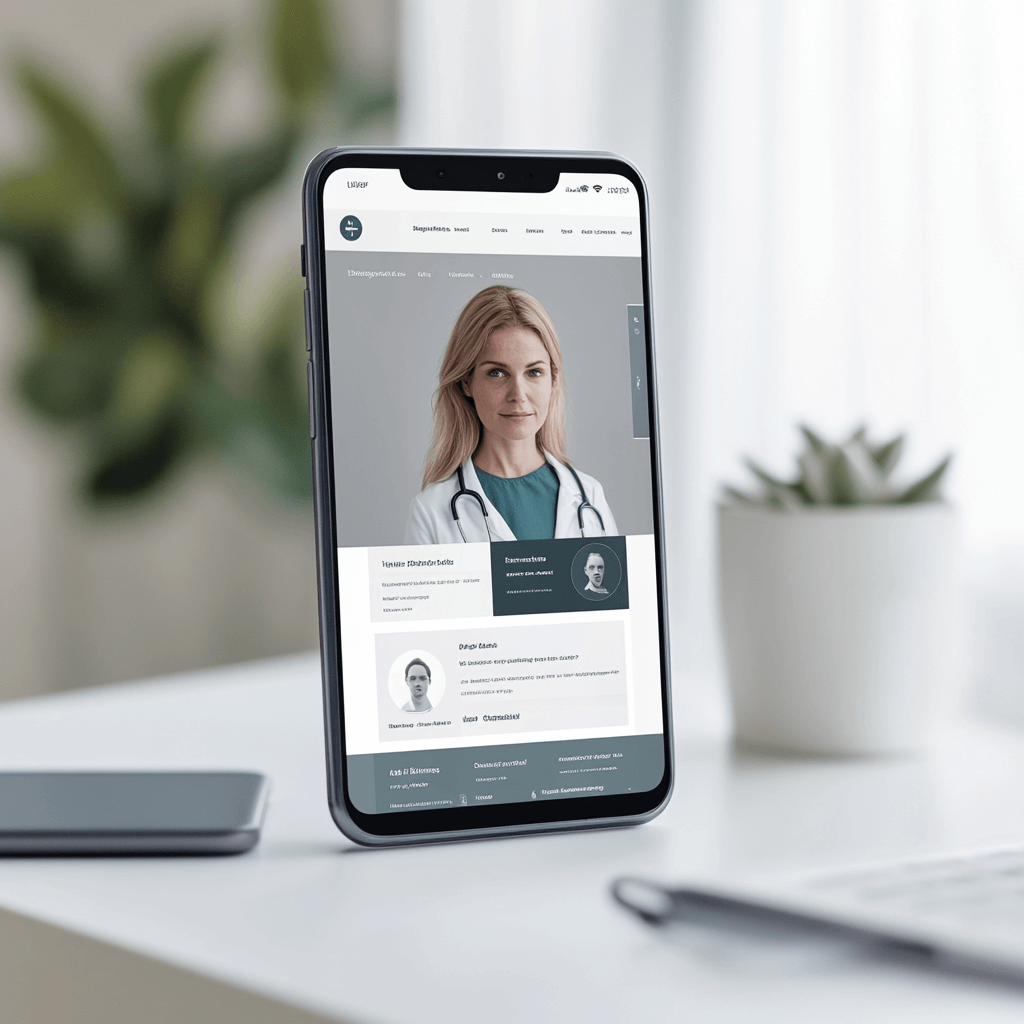In an era where your website is often the first impression patients have, staying ahead in web design has never been more critical. Whether you’re a surgeon, physiotherapist, or dermatologist, modern medical web design is not just about aesthetics—it’s a balance of seamless functionality, patient engagement, and forward-thinking technology. Here, we dive into the latest trends in medical web design that clinics and consultants should know to stay competitive, attract the right patients, and simplify operations.
-
Personalised Patient Journeys – coming soon!
Patients today expect a digital experience as tailored as their in-person care. Dynamic, interactive websites now capture user behaviour and present content based on individual needs, thanks to advanced tools like AI-driven personalisation. For instance, a prospective patient searching for “ENT surgery in London” should arrive at a page tailored to their query, complete with pre-surgery FAQs, consultation options, and success stories. AI integrations personalise content to each patient, making them feel seen even before stepping into the clinic
-
Mobile-First Design for Accessibility
With mobile usage accounting for more than half of web traffic, a mobile-first approach is essential, particularly in medical web design. This design philosophy prioritises clean navigation, optimised load times, and accessible formatting for mobile users. For consultants and practices, this translates into more seamless communication with patients who rely on mobile for quick answers, appointment bookings, and FAQs.
By improving accessibility, especially for patients who may have vision or mobility impairments, your website can offer a truly inclusive digital experience that supports every step of the patient’s journey.
-
Patient-First SEO Strategies
Gone are the days of stuffing pages with keywords. Today, successful SEO strategies involve creating high-quality, long-form content that genuinely helps patients, particularly in medical niches where quality information can be life-changing. Blogs that address common patient questions, success stories, and educational videos not only boost rankings but build trust and credibility.
Moreover, medical websites are seeing a boost in SEO from FAQs and evergreen content—timeless articles on common procedures or conditions that keep visitors coming back. *My Medical Website* designs often emphasise this, noting that a well-placed FAQ page can turn your website into a resource patients trust, thus boosting your authority on search engines
-
Telemedicine Integration
Post-pandemic, telemedicine is here to stay, and the best-designed medical websites integrate it directly into the user experience. The ability to book virtual consultations, check symptoms online, and review medical notes securely is increasingly becoming an expected feature. Platforms offering HIPAA-compliant video consultations are crucial in medical web design, providing patients with secure, private, and easily accessible healthcare. Adding such functionality can increase patient satisfaction while optimising appointment scheduling and communication.
-
The Power of Visual Storytelling
Patients don’t just want to know about your qualifications; they want to know you as a person. Visual storytelling is an emerging trend where practices use short videos, patient testimonials, and interactive galleries to communicate their values, approach, and success stories. Think beyond stock images: high-quality, authentic visuals that showcase your team and procedures can significantly enhance patient trust and engagement.
-
AI-Powered Chatbots for Real-Time Assistance
For practices handling numerous inquiries, an AI-powered chatbot can streamline the patient journey. These bots can answer common questions, help patients find relevant information, and even book appointments. By integrating a 24/7 AI assistant, your practice can offer round-the-clock support, ensuring that patients’ questions are addressed immediately. One of *My Medical Website* clients, a top orthopaedic surgeon, implemented an AI chatbot to provide patients with reliable information at any hour, which led to fewer missed appointments and a notable increase in patient satisfaction
-
Enhanced Data Security and Privacy Features
In an age of heightened awareness around data security, especially in healthcare, it’s essential to reassure patients that their personal information is safe. From encrypted data storage to secure patient portals, a secure web design approach is key for any practice. With advanced encryption protocols, two-factor authentication, and clear privacy policies, patients can feel confident that their data remains protected. This trend not only meets regulatory standards but also builds patient trust—a crucial factor for any medical professional.
-
Focus on Speed and Performance
Nothing is more frustrating for a user than a slow-loading website, especially in a moment of need. Studies show that websites that load in five seconds or less outperform slower pages in terms of user retention and SEO. In medical web design, this means optimising images, cleaning up code, and utilising Content Delivery Networks (CDNs) to enhance speed. By optimising load times, your website can improve patient satisfaction and even boost Google rankings, especially important for practices competing in large metropolitan areas.
-
Accessibility and Compliance with Standards
Medical websites must comply with accessibility standards like WCAG (Web Content Accessibility Guidelines) to ensure they’re inclusive to all users, including those with disabilities. Implementing text-to-speech options, resizable text, and keyboard-friendly navigation are features that enhance usability for all patients. *My Medical Website* designs often prioritise accessibility, offering practices solutions that ensure inclusivity while aligning with regulations
-
Integration of AI and Automation in Operations
AI is transforming not just the patient-facing side but also backend operations. From automating appointment reminders to integrating patient feedback surveys post-consultation, AI offers seamless, effective ways to improve service without lifting a finger. By analysing patient interactions and automating routine tasks, practices can not only boost productivity but also provide a consistently high level of care.
The world of medical web design is evolving rapidly, with trends moving towards an increasingly patient-centric, data-secure, and tech-savvy approach. Clinics that embrace these innovations aren’t just keeping up—they’re elevating their patient experience and brand reputation.
Is your clinic ready to make these changes and attract more patients? Let’s chat about how a modern, tailored website could transform your practice. Book a free consultation today!

